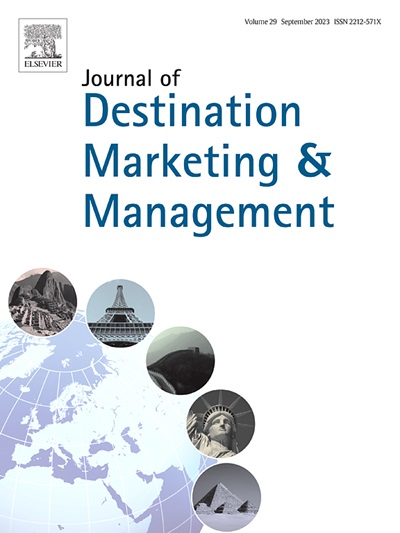Seeing means feeling? The transformation mechanism from visual attention to emotional experience toward linguistic landscape in cultural district
IF 7.4
2区 管理学
Q1 HOSPITALITY, LEISURE, SPORT & TOURISM
引用次数: 0
Abstract
Emotional experience forms the core of the tourism experience, with visual and auditory senses serving as primary channels for such experiences. Despite their significance as key audio-visual stimuli, the impact of linguistic landscapes on visual attention and tourist emotions remains underexplored. Experiment 1, utilizing on-site video footage of cultural districts and eye-tracking technology, revealed a correlation–although not an equivalence–between visual attention and emotional experiences. Experiment 2 expanded upon this by gathering data from 165 tourists observing Shaanxi’s linguistic landscape through eye-tracking devices and electromyography. The results reveal a transformation process–from visual stimulation to experiencing emotional engagement. This transformation is mediated by aesthetic experience for emotional pleasure and perceptual fluency for emotional arousal. This study underscores the complexity of the tourist gaze, emphasizing the necessity for individual cognitive processing and recognition. By elucidating the emotional mechanisms underlying tourists’ observation of linguistic landscapes, this research provides actionable insights for destination landscape design and tourism experience management.
看见就是感觉?文化区语言景观从视觉注意到情感体验的转化机制
情感体验是旅游体验的核心,视觉和听觉是情感体验的主要渠道。尽管语言景观作为关键的视听刺激具有重要意义,但它们对视觉注意力和游客情感的影响仍未得到充分探讨。实验1利用文化区的现场录像片段和眼动追踪技术,揭示了视觉注意和情感体验之间的相关性,尽管不是等价的。实验二在此基础上进行了扩展,收集了165名游客的数据,他们通过眼动追踪设备和肌电图观察陕西的语言景观。研究结果揭示了一个从视觉刺激到体验情感投入的转变过程。这种转变是由情感愉悦的审美经验和情感唤起的知觉流畅性介导的。本研究强调游客注视的复杂性,强调个体认知加工和识别的必要性。通过阐释游客观察语言景观的情感机制,本研究为目的地景观设计和旅游体验管理提供了可操作的见解。
本文章由计算机程序翻译,如有差异,请以英文原文为准。
求助全文
约1分钟内获得全文
求助全文
来源期刊
CiteScore
18.60
自引率
3.60%
发文量
46
审稿时长
43 days
期刊介绍:
The Journal of Destination Marketing & Management (JDMM) is an international journal that focuses on the study of tourist destinations, specifically their marketing and management. It aims to provide a critical understanding of all aspects of destination marketing and management, considering their unique contexts in terms of policy, planning, economics, geography, and history. The journal seeks to develop a strong theoretical foundation in this field by incorporating knowledge from various disciplinary approaches. Additionally, JDMM aims to promote critical thinking and innovation in destination marketing and management, expand the boundaries of knowledge, and serve as a platform for international idea exchange.

 求助内容:
求助内容: 应助结果提醒方式:
应助结果提醒方式:


